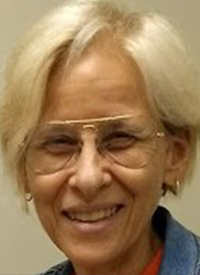Oncology RNs and Social Workers Play Key Role in Cervical Cancer Awareness and Advocacy
January is cervical cancer awareness month. This fourth article in a series underscores the role of the nurse or social workers in patient advocacy.
Debi Fischer, MSW, BSN, BA, LCSW, RN

RNs and social workers in oncology are key players in promoting cervical cancer awareness and advocating for patients.
As discussed in this series, January is cervical prevention month. As patient advocates, RNs and social workers can help push the agenda of eradicating this disease entirely in a few generations.1
The ribbon associated with this disease is the color teal. The significance of this color is that it can be indelibly linked to this disease in the way that red is linked to HIV/AIDS and pink to breast cancer. These movements give individuals a way to physical picture the disease awareness.
Being able to visualize awareness efforts is important, as the percentage of cases worldwide are high. There were 604,000 new cases of cervical cancer in 2020 and 342,000 deaths all reported to the World Health organization (WHO).1 India has one-quarter of all new cases, and accounts for one-third of incidences of death.
Multimedia Efforts
Nurses are in a position to promote patient education by encouraging them to listen to informative podcasts, videos, and webinars. A visit to a gynecologist’s office is a prime example of an educational opportunity. Podcasts, videos, and webinars can all be offered when a woman waits for an appointment. The RN or ARNP can present the material as part of a patient education outreach effort. In the hospital setting, the nurse and social worker can review preventive measures such as not smoking or going to smoking cessation classes for current smokers, and the importance of scheduling annual Papanicolaou test or receiving HPV vaccines‚ if applicable to the age group.
The Centers for Disease Control and Prevention (CDC) has a series of podcasts for patient audiences that can be listened to while waiting in the office.2 The podcasts are short, approximately, 1 minute and 15 seconds and the transcripts are also available.2 There are also webinars and videos for RNs and social workers on the CDC website concerning cervical cancer.3 For example, there is a video on preventing this disease in the 21st century that I found quite useful. There is another video on community-based efforts to prevent this disease.
Moreover, drug companies, such as Merck, the manufacturer of pembrolizumab (Keytruda), an immunotherapy used against cervical cancer also has a comprehensive website for health care professionals and patients discussing this drug and its’ use against this cancer as well as others.4 I find many of these resources to be helpful and easy to understand.
Famous Patient Care Advocate
Finally, I would like to highlight a famous patient advocate that oncology RNs and social workers should be aware of. Miss USA Ellie Smith is the leader of the Louisville chapter of the National Cervical Cancer Coalition (NCCC), which merged with the American Sexual Health Association (ASHA) in 2011. ASHA is a nonprofit association that focuses on sexual health issues and teaching.
Smith’s late grandmother’s cause of death was cervical cancer in 2015.As a result, she has dedicated her platform to cervical cancer awareness.5 Because of her grandmother’s journey, she decided to incorporate the topic of cervical cancer awareness into her public role. According to Smith’s family, Ellie’s grandmother did not follow up with routine check-ups, including Papanicolaou test, because she was very busy as a caretaker for own mother, who had Parkinson Disease and leukemia.
Summary
From prevention, Papanicolaou test and screening guidelines, navigating treatments options, and encouraging awareness, oncology RNs and social workers play a key role in advocating for patients with cervical cancer. I applaud nurses and social workers for their work and encourage you to continue advocating for patients.
References
- Cervical cancer. World Health Organization. February 22, 2022. Accessed January 27, 2023. bit.ly/3jd3IJa
- Vital signs-cervical cancer is preventable! Centers for Disease Control and Prevention. Accessed January 25, 2023. https://bit.ly/3kRSgDd
- Webinars and other videos. Centers for Disease Control and Prevention. Accessed January 25, 2023. https://bit.ly/3kNhdzM
- HCP & patient resources. Merck. Accessed January 26, 2023. https://bit.ly/3wB7C1C
- Schaefer S. Elle Smith has been crowned Miss
USA 2021, and part of her platform is cervical cancer awareness, as
a memorial to her grandmother. November 30, 2021. Accessed January 27, 2023. https://bit.ly/3Y0Hb15
Latest Conference Coverage
2 Commerce Drive
Cranbury, NJ 08512
All rights reserved.


